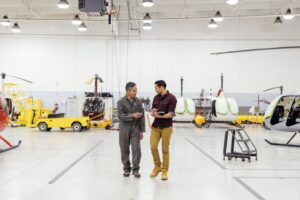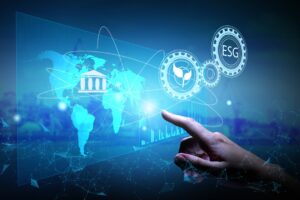Partnering to transform teaching and learning in the classroom
Today, there are 1.4 billion students in the world, representing the young men and women who will become the doctors, engineers, teachers, and leaders of tomorrow. Ensuring they are prepared with the twenty-first century skills needed for these jobs—and those that don’t yet exist—is something we think a lot about at Microsoft as we work to empower and inspire students everywhere to follow their dreams.
On February 4, Microsoft CEO Satya Nadella and I had an opportunity to welcome 400 of our top education partners in Redmond, Washington, during our annual Global Education Partner Summit (GEPS). This three-day event provides an opportunity for us to connect with many of our most trusted and valued partners to discuss opportunities for educational innovations—from revolutionizing teaching and learning in the classroom to providing real-time access to data-driven insights that can help school leaders better track individual student progress and needs.
The way teaching and learning happens is continually transforming with the rise of more personalized, evidence-based, and adaptive learning models. As we listen to and work hand-in-hand with educators and school leaders around the world, Microsoft understands and embraces this shift. Our company mission is to enable every person and organization on the planet to achieve more, and education is a core component of that mission. Our products and services are built with education in mind by using a platform approach that allows partners to add value and relevant expertise to local systems to ensure the greatest benefit for educators, students, parents and administrators alike.
Whether it’s leveraging, extending or integrating with Microsoft technology, or deploying, configuring and augmenting our platforms within customer infrastructures, our partners are critical in helping us improve educational opportunities for students worldwide.
Enriching the classroom experience
Learning styles can be as individual as the students themselves, but games and contests are a surefire hit in the classroom. Microsoft partner RedCritter kept this in mind as they created a unique gamification and achievement solution that can be used in any classroom around the world, regardless of curriculum. RedCritter uses a wide range of Microsoft technologies—including Microsoft Azure, Windows 10, and Cortana—to enable teachers to create and award digital badges, skill points, and even give the students virtual currency for their classroom rewards store.
Regardless of subject, these game mechanics make it possible for teachers to create new and exciting learning experiences for their students. By using RedCritter and programs like Minecraft, educators can get a broader set of students interested in and excited about STEM subjects.
Other partners are building on and incorporating products such as Skype, Office 365, OneNote, Office Mix, Sway, and Windows 10 to provide new productivity experiences for students, teachers, and parents alike. In many cases they’re also using these products to connect to a variety of learning management systems (LMS).
Sri Chaitanya Schools and partner Mobiliya in India have developed a dashboard-based system that utilizes Office 365 and Power BI to facilitate communications between teachers, students, and parents and to streamline the delivery of learning management systems content. The school is also using Microsoft Azure to move to a 100 percent digital classroom format and provide a more personalized learning experience for its 12,000 students.
Machine learning and big data go to school
In the back office of education, the evolution of cloud and big data technology is enabling scenarios that are truly transforming the industry. You’ve heard me talk about the ways that Azure cloud technologies are being used to help Pierce Elementary School in Arlington, Massachusetts, realize significant energy savings with the Azure platform and partner Iconics. And more is happening. Partners are helping redefine the category of education services, often enabling new scenarios, such as automated security systems that use face recognition, or solutions that predict equipment failures before they happen by using IoT-based solutions—reducing facilities management expenses. The possibilities are endless.
In the realm of big data and machine learning, educational institutions are now able to take advantage of in-the-moment, data-driven insights that inform their policies and planning. Azure Machine Learning is being used by multiple institutions, including Tacoma Public Schools and Cleveland Municipal School District in Michigan, to assist with dropout prevention and performance forecasting. The latter is using PowerBI and Azure Machine Learning for Early Warning Indicator programs to prevent dropouts, raise student enrollment, and improve student and teacher performance.
In the past, such capabilities would have required the availability of server infrastructure and machine learning experts, restricting the benefits to those schools that could afford the associated costs. But today, it’s a lot easier to take advantage of these technologies, and even schools in the developing world can benefit.
Microsoft investments in education
At Microsoft, we believe that computational thinking and problem solving skills are relevant for every job in every sector in the twenty-first century, and are an important aspect of our educational systems today. The effective use of technology to support teachers can transform education, inspire learning anywhere, and unlock the potential of all young people. To promote this agenda, we take a multi-faceted approach to encouraging the study of STEM curriculum in schools and in helping students to develop computational thinking approaches.
Through Microsoft YouthSpark, we are investing $75M in community programs to increase access to computer science education for all youth, especially for those from under-represented backgrounds, and build greater diversity into the tech talent pipeline. This initiative includes programs like DigiGirlz, that help reduce the gender gap by giving high school girls a chance to learn about careers in technology and participate in technology workshops. Other programs, such as Microsoft Imagine and TEALS, give students around the world the opportunity to learn about careers in technology, connect with Microsoft employees, and participate in hands-on computer and technology activities.
Microsoft has a long history of enabling teachers and schools with resources, support, and skills to help prepare the next generation for the opportunities ahead. In addition, we provide professional development to government policymakers, school leaders, and educators around the world to take new approaches to teaching and learning, by using technology to develop twenty-first century skills.
All of this is possible thanks to the support from a wonderful ecosystem of partners whose specialization adds to the value we can bring to different education systems around the world.




